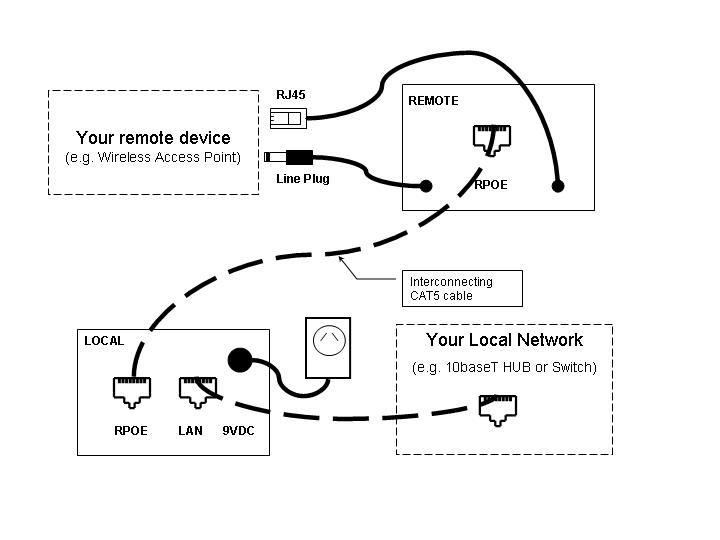Why is Power Regulation Important?
Simple POE units use the spare CAT5 conductors as a long
extension cable between the AP and its provided power supply. The problem is that resistive losses in the CAT5 cable mean that the voltage at the AP
end of the cable is less than at the power supply end.
For example, if your AP comes with a 5V power supply, and you
use a simple POE setup, you might only have 4.5V at the AP when the AP is
connected and transmitting. The AP may still work at this reduced voltage, but
the transmitted signal is weaker and data throughput drops. The results of some
real-world tests I did are
here.
The solution is RPOE, where a new DC power supply is used to
feed a higher voltage into the 'bottom' of the cable. After resistive losses in
the cable there is still enough voltage to power
a voltage regulator at the AP end of the cable. The regulator provides a very
steady supply voltage to the AP, regardless of changes in current and cable
length.

